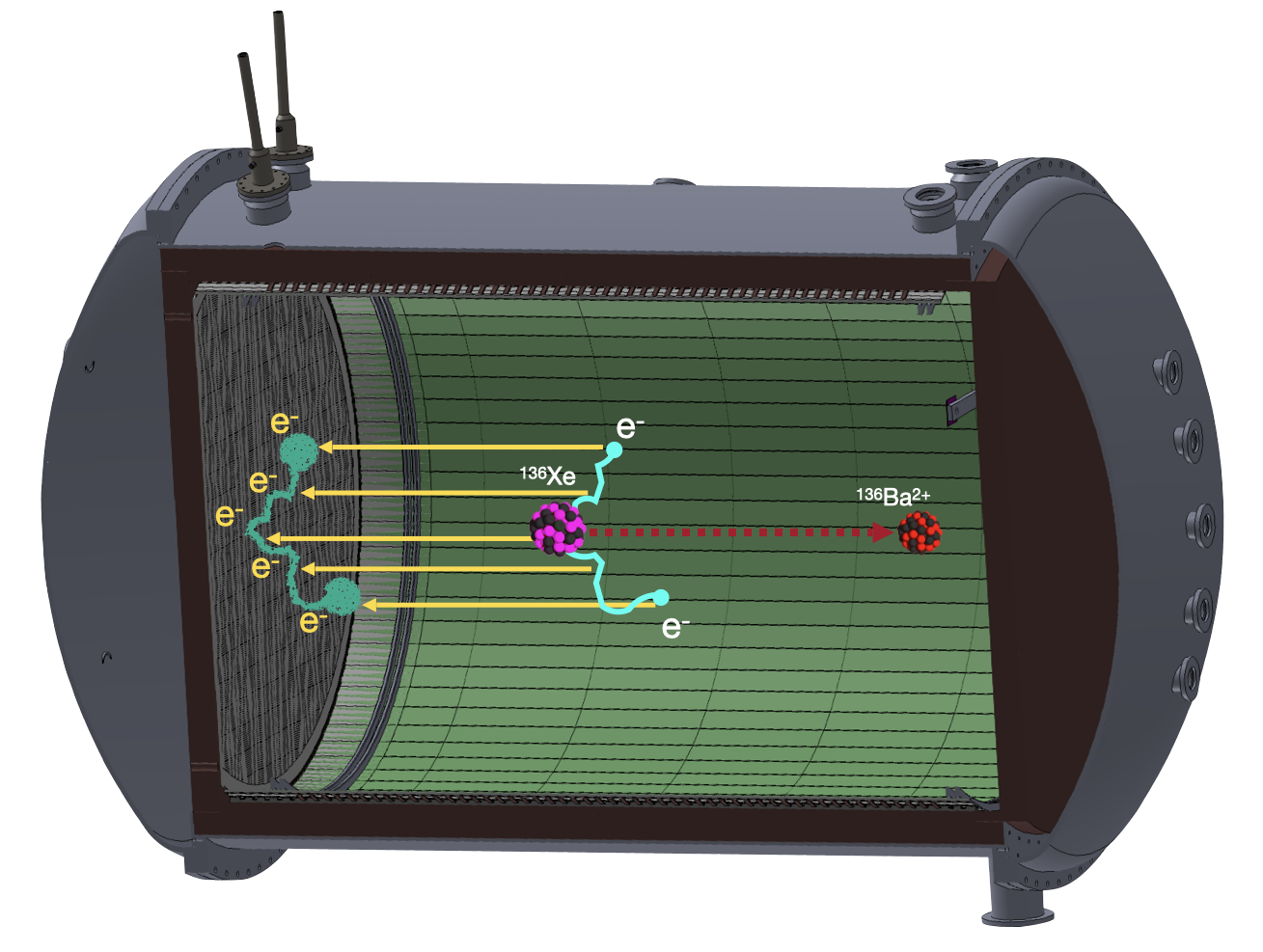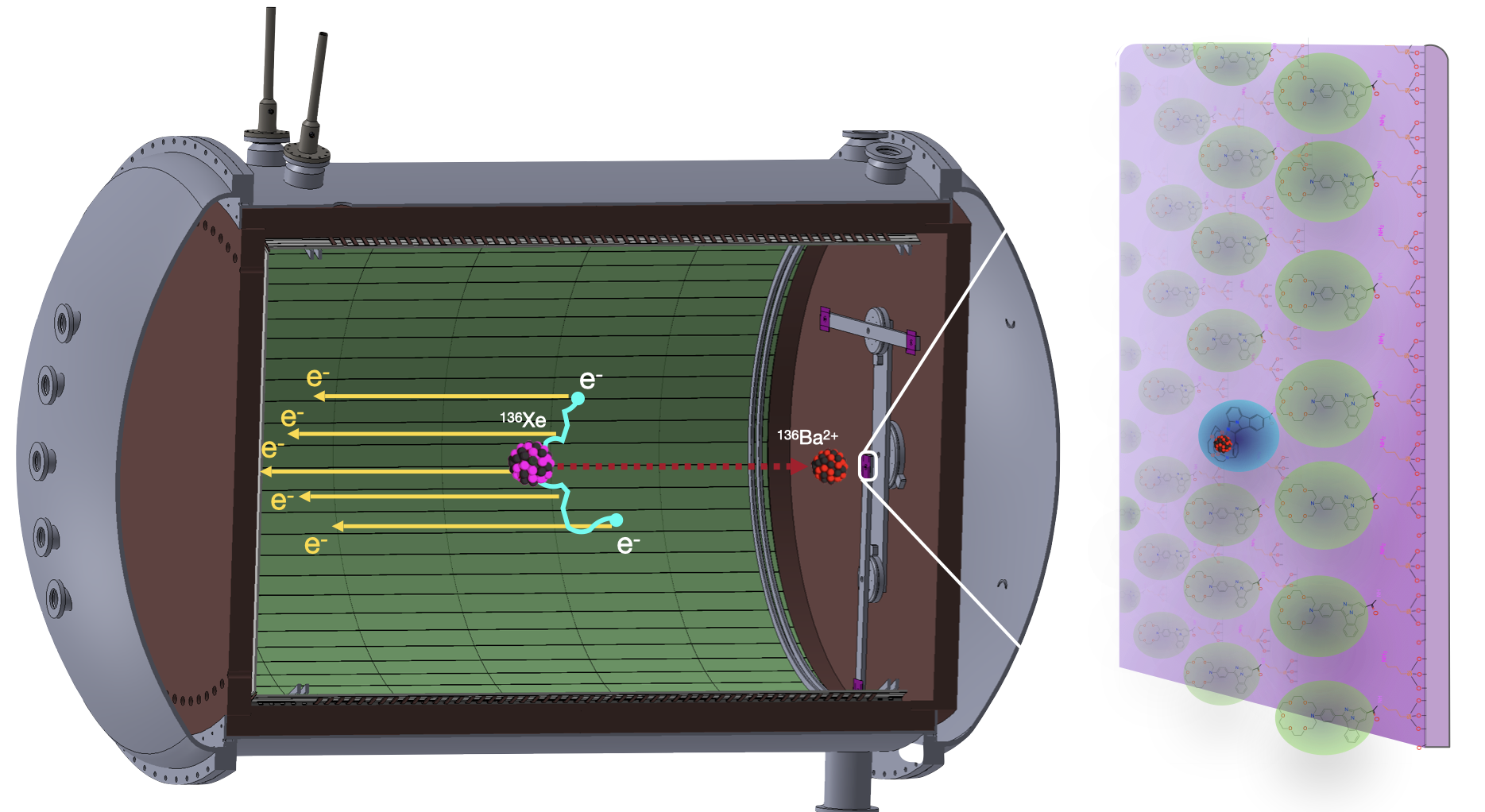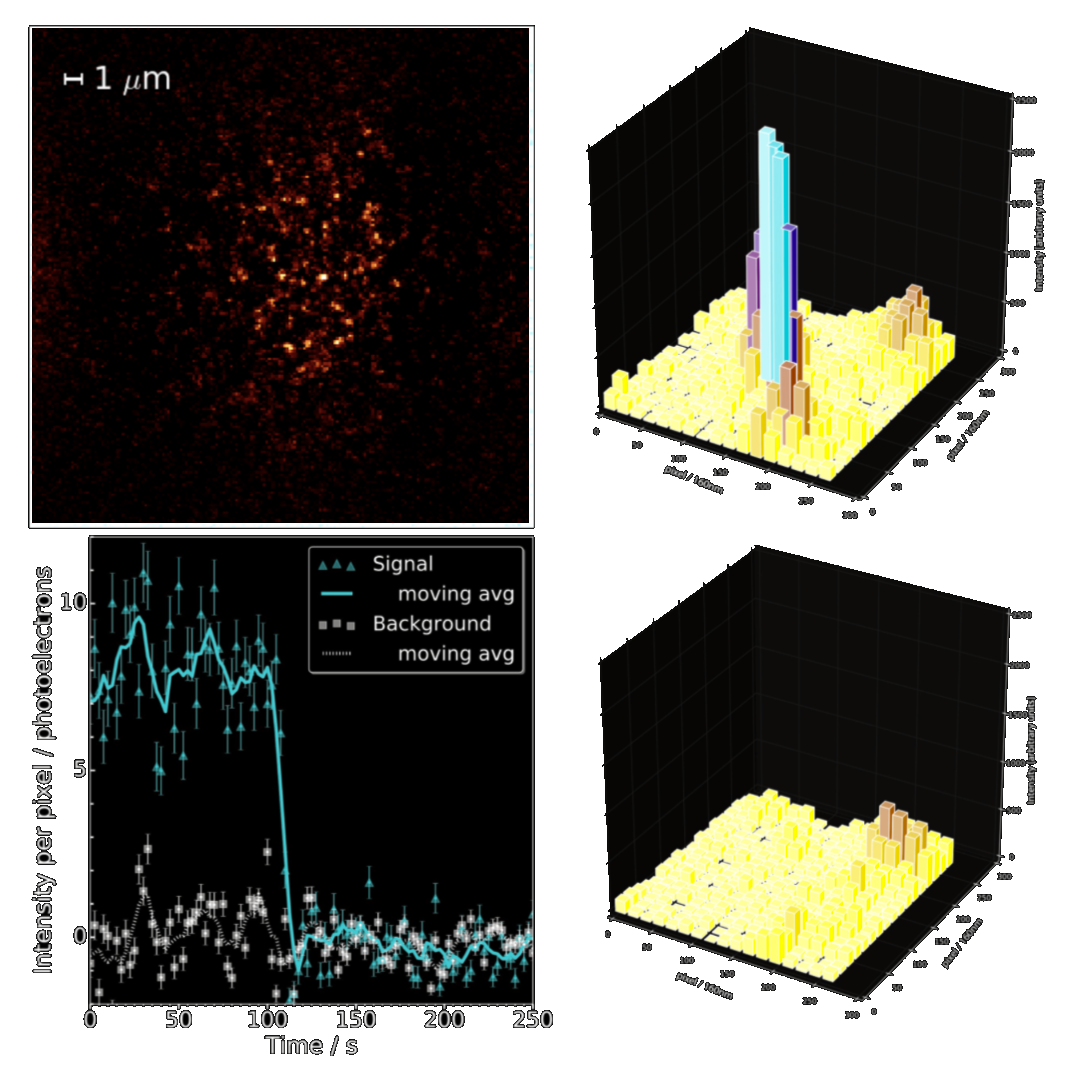The great challenge for neutrinoless double beta decay experiments is distinguishing the extremely elusive signal from the backgrounds. Since the half-life of the decay is expected to be over 1027 years, very large amounts of the target isotope must be amassed and ton-scale detectors must be developed. However, by scaling up the detectors, the radioactive backgrounds also increase. This is also the case in NEXT. Even for a small detector like NEXT-White, the region of interest is dominated by background coming from impurities in the detector material. The background to signal ratio is around 1017, so finding the neutrinoless double beta decay signal would be equivalent to finding a single grain of sand in a beach of about 70 km2. Still, this is what the NEXT experiment is trying to do. Now, there is another fingerprint of the double beta decay that is not being utilised yet: the barium ion.
Barium can only be produced by the double beta decay in the detector. Therefore, its unambiguous detection would automatically remove all background. NEXT is working to develop methods of detecting these barium ions using monolayers of organic chemosensors developed to respond to Ba2+ at the detector cathode (Refs. 1, 2). These molecules change their fluorescence response when they interact with a barium ion, which can be sensed by exciting them with lasers and studying the properties of the re-emitted light). A blue dot in the above image indicates where the barium has been trapped, and an individual molecule can be resolved as a diffraction-limited fluorescent spot using sensitive scientific cameras. To realize such methods in practice, it is necessary to realize technology that can identify and image a single Ba ion among one ton, or 1028 Xe atoms.


(Bottom) Fluorescence signal of Barium trapped by a molecular indicator.
So how could something like this be achieved? Single molecule fluorescence imaging is a widely used technique in biochemistry, where it enables superresolution imaging to reconstruct features on spatial scales below the diffraction limit. A commonly imaged ion is Ca2+, which plays an important role in neuronal signaling in humans and animals. The NEXT collaboration demonstrated that molecules that were designed to image Ca2+ can also realize single molecule fluorescence imaging of Ba2+. Single molecules can be identified by observing the time dependence of the fluorescence emitted from individual spots in a microscope image – a loss of fluorescence intensity indicates that a molecule has undergone a destructive chemical reaction and ceased emission. This loss of brightness occuring in a single step is the hallmark of single molecule fluorescence. The image below shows examples of single ions that were imaged by NEXT using commercial calcium sensing dyes, in Ref. 3.

Much work must be done to develop these promising early results into a system that can operate inside a time projection chamber. First, the molecules used in these demonstrations are not suitable for barium tagging in practice: they are developed to work in water,but the xenon gas in a time projection chamber is extremely clean and dry. This means that NEXT must develop new classes of organic molecules that can sense barium ions in these conditions. Second, the fluorescence must be recorded by a microscope that functions within a pressurized xenon gas detector: this requires advances in microscopy beyond the current state of the art. Third, ions must be collected from across the large volume on the TPC and brought to the sensors. And finally, this entire chain of ion collection and imaging must be robustly tested, characterized and optimized in barium test beams before it can be deployed in a real experiment. NEXT is working on all of these topics as part of a vigorous barium tagging R&D program.
References
- D. Nygren, Nucl Instrum Methods Phys Res A 824:2–5, 2016. “Detection of the barium daughter in 136Xe →136Ba+2e− by in situ single-molecule fluorescence imaging”.
- B.J.P. Jones, et. al., “Single molecule fluorescence imaging as a technique for barium tagging in neutrinoless double beta decay” 2016 JINST 11 P12011
- A. D. McDonald et al. (NEXT Collaboration), Phys. Rev. Lett. 120, 132504, “Demonstration of Single-Barium-Ion Sensitivity for Neutrinoless Double-Beta Decay Using Single-Molecule Fluorescence Imaging”.
